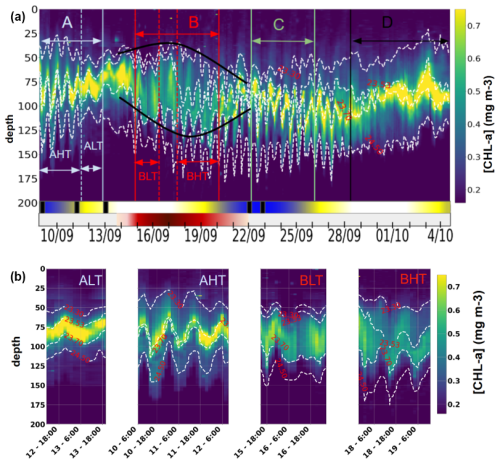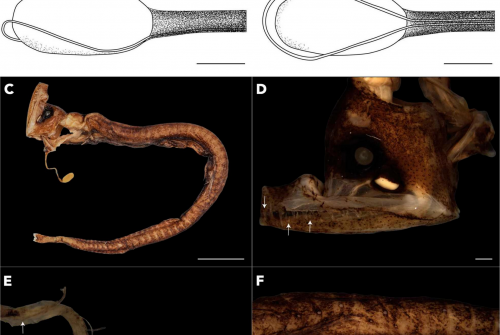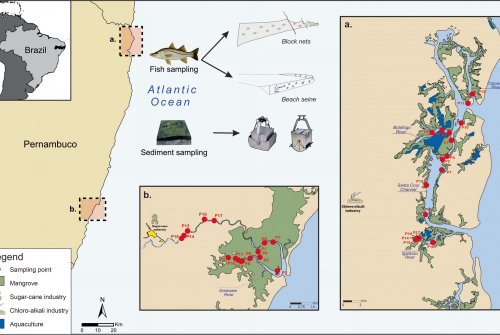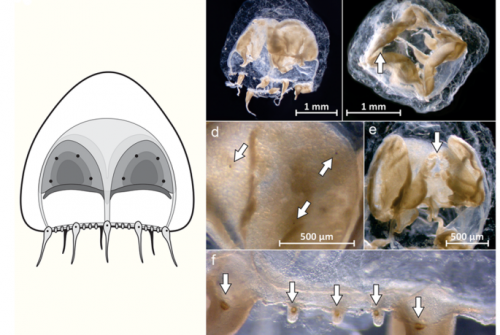
The ocean region off the Amazon shelf including the shelf break presents a hotspot for internal tide (IT) generation, yet its impact on phytoplankton distribution remains poorly understood. While previous studies have extensively examined the physical characteristics and dynamics of ITs, their biological implications – particularly in nutrient-limited environments – remain underexplored. To address this question, we analyzed a 26 d glider mission deployed over September–October 2021 sampling hydrographic and optical properties (chlorophyll a) at high resolution along an IT pathway as well as satellite chlorophyll a and altimetry data to assess mesoscale interactions. Chlorophyll a dynamics were analyzed under varying IT intensities, comparing strong (HT) and weak (LT) internal tide conditions. Results reveal that ITs drive vertical displacements of the deep chlorophyll maximum (DCM) from 15 to 45 m, accompanied by 50 % expansion in its thickness during HT events. This expansion is observed with a dilution of the chlorophyll a maximum concentration within the DCM depth. While direct turbulence measurements were not collected, the observed vertical redistribution of chlorophyll a is indicative of tidally driven cross-isopycnal exchanges, the only physical mechanism explaining the transfer of biomass above and below the DCM. At the surface, turbulent fluxes provide 38 % of the chlorophyll a input, while the remainder is supplied by in situ biological activity. Notably, total chlorophyll a in the water column increases by 14 %–29 % during high internal tide phases, indicating a net enhancement of primary productivity driven by the combined effects of vertical mixing and stimulated surface-layer biological activity. These findings indicate that internal tides can be an important driver of chlorophyll a distribution and short-term biological variability in our study region. By reshaping the vertical chlorophyll a profile through vertical mixing, active internal tides influence primary productivity and may contribute to carbon cycling, particularly in oligotrophic oceanic environments where both a deep chlorophyll maximum and strong internal tides are present.
DOI: doi.org/10.5194/os-21-2873-2025
Reference
M’hamdi A., Koch-Larrouy A., Costa da Silva A., Dadou I., de Macedo C., Bosse A., Vantrepotte V., Aguedjou M., Tran T.-K., Testor P., Mortier L., Bertrand A., Lee J., Rollnic M., Araujo M. 2025. Impact of Internal Tides on Chlorophyll-a Distribution and Primary Production off the Amazon Shelf from Glider Measurements and Satellite Observations. Ocean Science, 21: 2873–2894.








